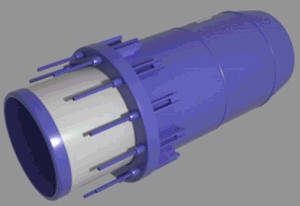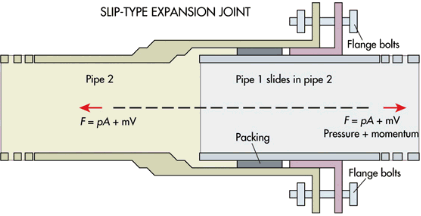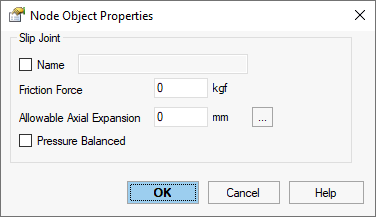

A telescopic joint between two pipes. During slip joint compression, friction forces occurs. Friction forces acting on left and right pipes in opposite directions. Also pressure thrust force occurs, that tends to push the pipes apart. If compression force is lower than the friction force, then expansion joint doesn't move. If compression force is greater than the friction force, then two pipes slide along each other in axial direction.


Expansion Joint analysis results can be found in Expansion Joint Deformation Table. See also "How to Reduce the Nozzle Loads in START-PROF"
All expansion joint properties can be taken from expansion joints database by pressing the "..." button and selecting the appropriate expansion joint.
For Slip type expansion joint the effective area calculated using equation Aeff = Pi * (ID)^2 / 4, ID - internal pipe diameter

Property |
Description |
Name |
Element name. If checked then it shown in 3D view |
Allowable axial expansion movement, Δk1 |
Allowable axial expansion movement (maximum allowable linear deformation): Δk/2, where Δk - full allowable axial expansion movement. Used for analyzing expansion joint deformation. Value must be obtained from manufacturer |
Frictional force |
Maximum frictional force. For slip type expansion joints |
Pressure Balanced |
Switch it on if pressure thrust force should not be considered |
To insert a ballasting weight, select the desired node and use the menu option: Insert > Expansion Joint > Axial Slip Joint